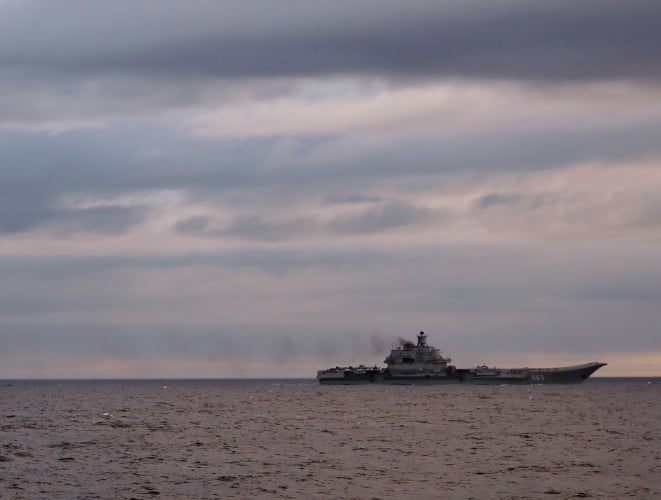
Russia is recalling the Russian carrier Admiral Kuznetsov from the Eastern Mediterranean and sending the ship back to its homeport in northern Russia.
The strike group consisting of the carrier, guided missile cruiser Peter the Great, two Udaloy-class guided missile destroyers and auxiliaries will begin the voyage to Severomorsk.
“In accordance with the decision of Supreme Commander-in-Chief of the Russian Armed Forces Vladimir Putin, the Defense Ministry is beginning to reduce the Armed Forces grouping in Syria,” the military head of the Russia’s armed forces Gen. Valery Gerasimov told reporters on Friday, according to Russian state-controlled media.
“The Russian Armed Forces’ carrier group led by the Admiral Kuznetsov heavy carrier will embark from the Mediterranean to Northern Fleet’s base later in the day.”
The flotilla entered the Mediterranean in early November as part of Russian efforts to provide military support to Syrian forces loyal to Bashar al-Assad. While Kuznetsov’s aviation complement likely did little to change the outcome of the fight for Aleppo from the sea, Su-33 fighters that traveled with the strike group were involved with the assault on Aleppo operating from ground bases, defense officials told USNI News.
Russian forces in Syria claimed naval aviation conducted more than 400 sorties in the two months but did not specify if the assets were based on land or came from the carrier.
During the weeks Kuznetsov was operating off of Syria, the air detachment lost two fighters due to a chain of failures that began with malfunctions in the carrier’s arresting gear.
The loss of the fighters and the lack of any real military effect from the carrier highlighted problems with Russia’s sole carrier and gaps in its naval aviation abilities.
A planned Russian naval aviation training facility is a year late in opening and the Russian Navy has relied on contractors to fill in the gaps in its pilot ranks.





